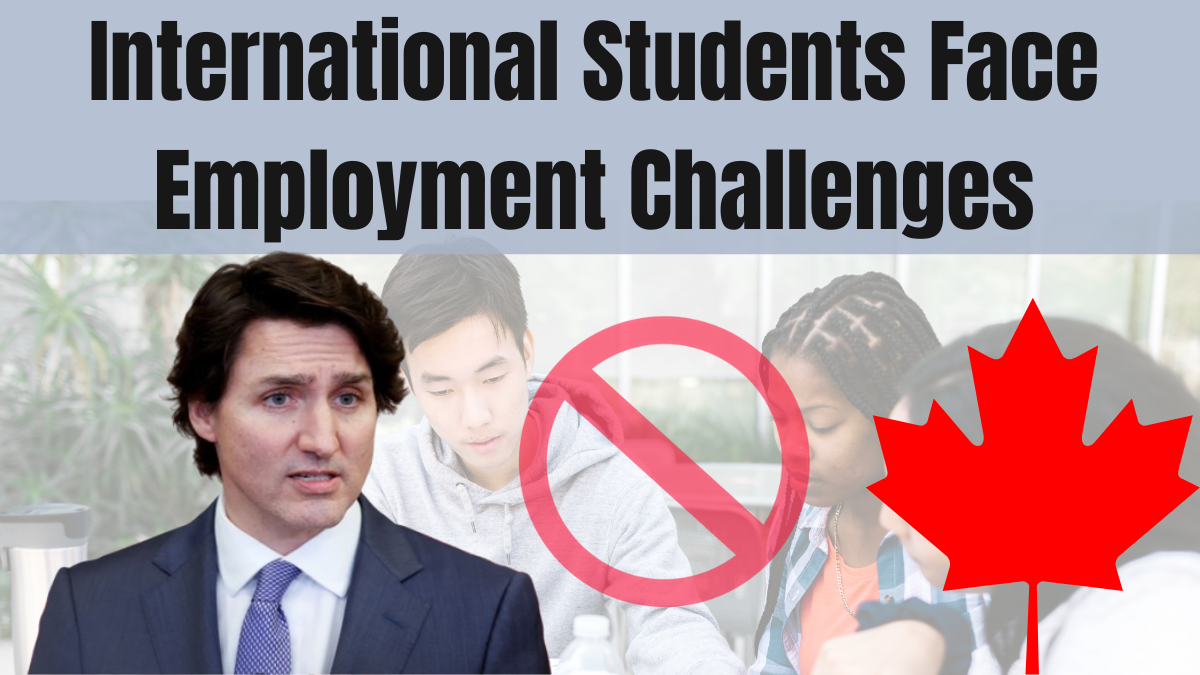Canada’s international graduates play a vital role in the economy, yet they face significant challenges transitioning from education to the workforce. A new Statistics Canada study examining the employment outcomes of the 2020 graduating class highlights wage disparities, job mismatches, and immigration hurdles that make it harder for foreign graduates to secure stable employment.
With 200,000 Post-Graduation Work Permits (PGWPs) nearing expiration, concerns are growing over how international students can successfully integrate into Canada’s labor market.

How Many International Graduates Secure Employment?
By 2023, 88.6% of international graduates from the 2020 cohort were employed, slightly lower than the 91.0% employment rate of Canadian graduates.
Employment disparities were more pronounced at higher education levels:
- Bachelor’s degree holders: 84.5% (international) vs. 91.9% (Canadian)
- Master’s degree holders: 91.3% (international) vs. 94.6% (Canadian)
- Doctoral graduates: 90.6% (international) vs. 94.2% (Canadian)
However, college graduates had similar employment rates, indicating that certain fields provide better job security for international students.
What Are the Biggest Employment Barriers for International Graduates?
Despite high employment rates, international graduates face more job insecurity, underemployment, and lower salaries compared to domestic graduates. The key barriers include:
1. Work Permit and Immigration Challenges
- The transition from PGWP to permanent residency is complex and delays access to stable jobs.
- Many employers hesitate to hire international graduates due to uncertainty about their long-term residency status.
2. Lack of Canadian Work Experience
- Employers prefer candidates with local experience, making it harder for international graduates to compete.
- Limited access to internships, co-op programs, and networking opportunities affects job prospects.
3. Recognition of Foreign Credentials
- While international students earn Canadian degrees, those with prior foreign education may still face credential recognition issues, especially in regulated professions.
4. Education-Job Mismatch
- In 2023, only 36.6% of international graduates with a bachelor’s degree found jobs requiring a university degree, compared to 58.8% of Canadian graduates.
- International graduates were three times more likely to work in sales and service jobs (30.6%) than Canadians (9.5%), leading to underemployment.
How Do Salaries for International Graduates Compare to Canadians?
A wage gap exists between international and domestic graduates, with foreign graduates earning on average 20.2% less in the first few years after graduation.
| Degree Level | Median Annual Salary (2023) | Wage Gap |
|---|---|---|
| Bachelor’s | $52,000 (International) vs. $65,200 (Canadian) | -20.2% |
| Master’s | $68,300 (International) vs. $78,500 (Canadian) | -13.0% |
| Doctorate | $79,500 (International) vs. $92,000 (Canadian) | -13.6% |
However, graduates in STEM (Science, Technology, Engineering, and Mathematics) and business fields tend to secure higher-paying jobs faster than those in humanities and social sciences.
Do International Graduates Feel Satisfied with Their Jobs?
Despite wage gaps and employment challenges, international graduates report similar job security and satisfaction levels as their Canadian peers:
- Job Satisfaction: 81.0% (International) vs. 82.0% (Canadian)
- Job Security: 75.8% (International) vs. 79.1% (Canadian)
- Salary Satisfaction: 48.7% (International) vs. 58.0% (Canadian)
What Can Canada Do to Improve Employment Outcomes for International Graduates?
Experts suggest several policy interventions to help international graduates secure better jobs and close the wage gap.
1. Expedited Permanent Residency Pathways
- Faster PR pathways through Express Entry draws and PGWP extensions can help graduates secure long-term employment.
2. Stronger Employer Engagement
- Encouraging businesses to offer internships, mentorships, and co-op placements can help bridge the Canadian experience gap.
3. Improved Credential Recognition
- Standardizing degree recognition across provinces and industries can help international graduates secure better jobs.
4. University Support for Career Development
- Expanding career services, networking events, and job search support for international students can enhance employability.
Key Takeaways
- 88.6% of international graduates from the 2020 cohort were employed by 2023, slightly lower than 91.0% for Canadian graduates.
- Work permit challenges, lack of local experience, and wage gaps make it harder for international students to secure stable jobs.
- STEM and business graduates fare better in the job market, while humanities graduates struggle with underemployment.
- Faster PR pathways, stronger employer engagement, and credential recognition improvements could help international students succeed.
FAQs
Why do international graduates have lower employment rates than Canadian graduates?
International students face challenges in securing permanent residency, gaining Canadian work experience, and overcoming employer hesitation. Many jobs require local experience, making it harder for international graduates to find employment immediately.
What causes the wage gap between international and domestic graduates?
The wage gap is influenced by limited networking opportunities, job market integration, and underemployment. Many international graduates start in lower-paying roles, leading to salary discrepancies.
What percentage of international graduates work in jobs that match their education?
Only 36.6% of international graduates with a bachelor’s degree secured jobs requiring university-level qualifications, compared to 58.8% of Canadian graduates.
What are the best strategies for international students to improve their job prospects?
- Gain Canadian work experience through internships and co-op programs.
- Network with professionals at career fairs and alumni events.
- Focus on high-demand fields like tech, finance, and healthcare.
How can Canada improve employment opportunities for international graduates?
- Simplifying PR pathways to help graduates access stable jobs.
- Encouraging employers to hire international students through mentorship programs.
- Standardizing credential recognition to ensure degrees are valued nationwide.
What policy changes could help international students find jobs faster?
- Extending PGWPs to allow more time for job searching.
- Increasing government-funded internships for international graduates.
- Improving language and career support services in universities.
Click here to know more.
Aanchal is a passionate writer with a keen interest in storytelling, content creation, and creative expression. She enjoys exploring diverse topics and crafting engaging narratives that captivate readers.
